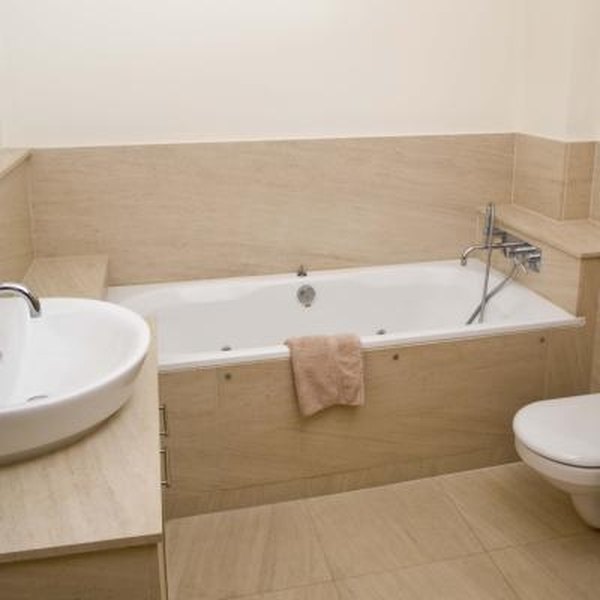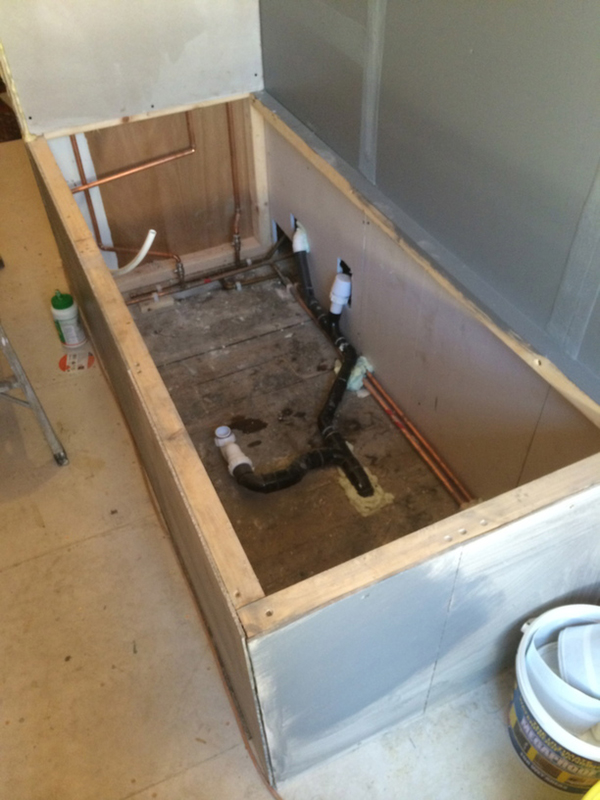We have stumbled upon this article about A Step-by-Step Guide to Installing a Bathtub directly below on the web and believe it made sense to write about it with you in this article.

Mounting a bathtub isn't precisely brain surgery, yet it does require solid plumbing, carpentry, as well as in some cases, tiling skills. Changing an old tub with a brand-new one is additionally a reasonably hard project. If the old tub is readily available, the task can relocate speedily; if you have to open a wall surface to get rid of the old bathtub and also place the new tub, the task is a lot harder. In either situation, the project is within a home handyman's abilities, although you will certainly require a helper to move out the old bathtub as well as set in the brand-new one. Make certain you have certified on your own for the job and fit attempting it. Rather than working with a specialist to take over a halfway-completed project, it is far better to take into consideration utilizing one prior to you begin. Opportunities are you may require a professional plumber to make tube links.
This short article will certainly aid you set up a new bath tub in your shower room if you have actually already gotten a brand-new tub as well as do not need to alter the setup of your previous water supply pipelines.
Your devices and material list need to comprise the following:
Removing Old Taps
If you need to replace old taps with new ones as a part of your installation, then the first thing you ought to do is detach the supply of water. After doing so, switch on the taps to drain any water continuing to be in the system. The procedure of eliminating the existing taps can be quite problematic due to the limited accessibility that is commonly the situation.
Utilize a basin wrench (crowsfoot spanner) or a tap tool to reverse the nut that links the supply pipes to the faucets. Have a fabric ready for the continuing to be water that will certainly come from the pipelines. Once the supply pipes have been eliminated, use the very same tool to loosen up the nut that holds the taps onto the bath/basin. You will certainly need to quit the solitary taps from transforming during this procedure. As soon as the taps have actually been eliminated, the holes in the bath/basin will certainly need to be cleaned up of any kind of old sealing substance.
Prior to going on to fit the new faucets, compare the pipe links on the old taps to the new faucets. If the old taps are longer than the new faucets, after that a shank adapter is required for the new faucets to fit.
Suitable New Touches
If the tails of the new faucets are plastic, after that you will need a plastic adapter to prevent damage to the string. One end of the adapter fits on the plastic tail of the tap and the other end offers a link to the current supply pipes.
If you require to fit a monobloc, after that you will certainly require decreasing couplers, which connects the 10mm pipe of the monobloc to the common 15mm supply pipeline.
Next, place the faucet in the installing hole in the bath/basin guaranteeing that the washers are in place in between the tap and also the sink. Secure the faucet in place with the manufacturer given backnut. As soon as the tap is firmly in place, the supply pipes can be connected to the tails of the faucets. The taps can either be attached by using corrugated copper piping or with typical tap ports. The previous kind must be attached to the faucet ends first, tightening up just by hand. The supply pipes can later be attached to the various other end. Tighten up both ends with a spanner after both ends have actually been linked.
Setting up the Tub
Using both wooden boards under its feet, place the bath tub in the needed position. The wood boards are valuable in uniformly spreading out the weight of the tub over the area of the boards as opposed to concentrating all the weight onto 4 little points.
The following objective is to make sure that the tub is leveled all round. This can be achieved by checking the level as well as adjusting the feet on the bathtub until the level checks out degree.
To set up taps, fit all-time low of the furthest adaptable tap connector to the proper supply pipe by making a compression sign up with; after that do the exact same for the various other tap.
Activate the supply of water and inspect all joints and new pipework for leakages as well as tighten them if necessary. Fill up the tub as well as also inspect the overflow outlet as well as the normal electrical outlet for leaks.
Ultimately, fix the bathroom paneling as explained in the producer's instruction manual. Tiling and also securing around the bathtub ought to wait until the bath tub has actually been used a minimum of once as this will resolve it into its last position.
Preparing for the Installation
To start with, the supporting frame provided with the bath needs to be fitted (if required) according to the supplier's guidelines. Next off, fit the taps or mixer to the tub. When suitable the faucet block, it is essential to see to it that if the faucet includes a plastic washing machine, it is fitted in between the bathroom and the taps. On a plastic bath, it is likewise sensible to fit a supporting plate under the faucets unit to prevent stress on the bath tub.
Fit the adaptable faucet connectors to the bottom of the two taps using 2 nuts and olives (in some cases supplied with the tub). Fit the plug-hole electrical outlet by smearing mastic filler round the sink electrical outlet hole, and then pass the electrical outlet with the hole in the bathroom. Utilize the nut provided by the producer to fit the plug-hole. Examine the plug-hole electrical outlet for an inlet on the side for the overflow pipeline.
Next off, fit the end of the adaptable overflow pipeline to the overflow electrical outlet. After that, screw the pipe to the overflow face which need to be fitted inside the bath. Ensure you use every one of the supplied washing machines.
Connect the catch to the bottom of the waste electrical outlet on the tub by winding the string of the waste electrical outlet with silicone mastic or PTFE tape, and also screw on the catch to the electrical outlet. Attach all-time low of the overflow tube in a comparable manner.The bathroom must currently prepare to be fitted in its final position.
Tiling Around the Bath tub
In the location where the bath meets the tile, it is necessary to secure the accompanies a silicone rubber caulking. This is necessary as the installation can move enough to break a rigid seal, creating the water to permeate the wall in between the bath and the tiling, bring about complications with moisture as well as feasible leakages to the ceiling below.
You can choose from a range of coloured sealers to assimilate your components and also fittings. They are sold in tubes and cartridges, as well as are capable of sealing spaces as much as a size of 3mm (1/8 inch). If you have a bigger space to fill up, you can fill it with twists of soaked paper or soft rope. Bear in mind to constantly load the tub with water before securing, to enable the movement experienced when the bathtub is in usage. The sealer can split fairly very early if you do not take into account this activity prior to securing.
Additionally, ceramic coving or quadrant tiles can be made use of to edge the bathroom or shower tray. Plastic strips of coving, which are easy to use and reduce to size, are additionally quickly readily available on the market. It is a good idea to fit the tiles making use of water-resistant or water resistant adhesive as well as cement.
Bathtub Installation
How Important Is A Bathtub To Your Home?
High-quality baths, showers, and other bathroom updates are necessary when considering a smart investment in your home. It’s a room that you go to every day and one that is constantly being used by guests.The bathroom is one of the top trafficked rooms in a home and also one of the most valuable in terms of home resale.
Install Piping Before Tub
You will be using your existing drain and waste vent system, but pipes required include the hot and cold water supply lines and a pipe leading to a shower head. A mixing valve and shower head are also needed. Air chambers may be required.
Position the Tub
Lower the tub into place so that the continuous flange fits against the wall studs and rests on 1’x4' or 2’x4' supports. Anchor the tub to the enclosure with nails or screws inserted through the flanges into the studs.
NOTE: Remember, bathtubs and shower stalls may require support framing. A bathtub filled with water is extremely heavy, so check building codes and framing support before installing the tub.
Assemble Drain Connections
Assemble the bathtub drain connections by connecting the tub overflow with the tub drain above the trap, not beyond it. The trap will have a compression fitting that screws over the arm of the overflow assembly.
Place a Pipe For the Shower Head
First, locate a brass female threaded winged fitting and attach it to a framing support via a screw or a nail. Then run a pipe up the wall for the shower head. Sweat or solder the other side of the brass fitting to the top of the pipe.
Attaching Hot and Cold Water Lines
Attach your water lines for both hot and cold by sweating these directly into the hot and cold ports of the mixing valve. The mixing valve will be how water enters the tub’s system, not by the pipes themselves.
Install the Spout
Extend a piece of 1/2 inch pipe, or whichever length is specified in the manufacturer’s instructions, for the tub spout. Sweat on a male threaded fitting at the end of the pipe or use a brass nipple of the proper length and a 1/2 inch cap.
NOTE: At this point you should have your rough-in plumbing work inspected before proceeding further.
Check For Leaks
Restore the water pressure and check the drain connection and the supply pipes for any sign of leaking.
estore the Bathroom Wall
Replace the wall with moisture-resistant drywall as a base for your wall covering. Seal the joints between the wall and your new tub with silicone caulk as protection against water seepage.
https://www.berkeys.com/2016/12/02/bathtub-installation-dallas/

As a devoted reader on A Step-by-Step Guide to Installing a Bathtub, I figured sharing that excerpt was worthwhile. If you enjoyed reading our blog posting kindly remember to share it. I thank you for reading our article about Installing A Bathtub.
Reliable plumber? Dial!